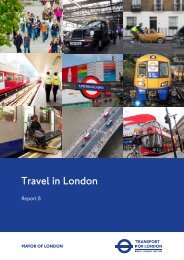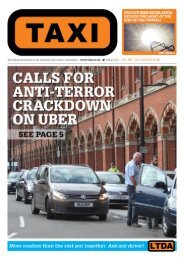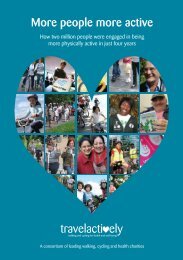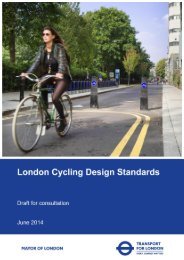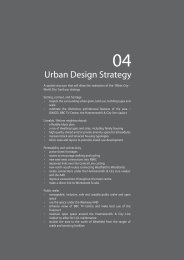Male-and-female-employment2012.pdf
Male-and-female-employment2012.pdf
Male-and-female-employment2012.pdf
Create successful ePaper yourself
Turn your PDF publications into a flip-book with our unique Google optimized e-Paper software.
<strong>Male</strong> <strong>and</strong> <strong>female</strong> employment<br />
<strong>Male</strong> <strong>and</strong> <strong>female</strong> employment profile:<br />
• 78 percent of the sector’s workforce is male<br />
• Women only make up 13 per cent of the taxi <strong>and</strong> private hire operation<br />
• The gender split within aviation is much more equal, with 44 per cent women<br />
Whilst overall men dominate the workforce, core occupations in passenger transport are<br />
characterised by large gender imbalances. Possibly the most extreme example is that only 13<br />
percent of those working in taxi <strong>and</strong> private hire operations are women, whilst 79 percent of air<br />
travel assistants are <strong>female</strong>.<br />
The reasons for this mixed picture can largely be explained by two factors: Gender perceptions of<br />
specific occupations <strong>and</strong> the nature of specific job roles (for instance, flexibility of hours <strong>and</strong> safety).<br />
Table: Core occupations dominated by gender<br />
Roles dominated by men<br />
Roles dominated by women<br />
Rail construction <strong>and</strong> maintenance operatives (100%) Air travel assistants (79%)<br />
Aircraft pilots (98%) Air traffic controllers (29%)<br />
Train drivers (96%) Rail travel assistants (27%)<br />
Taxi <strong>and</strong> private hire (94%) Driving instructor (20%)<br />
Bus <strong>and</strong> coach drivers (92%) Air transport operatives (17%)<br />
Source: People 1 st analysis of the Labour Force Survey 2010, Office for National Statistics<br />
Gender perception of specific occupations<br />
Some sector job roles are still largely considered to be either male or <strong>female</strong>, which results in<br />
applicants being biased towards one particular gender.<br />
Of all the passenger transport industries, aviation is the most gender balanced industry, with women<br />
making up 44 percent of the workforce. However, within the sector there are clear gender divisions<br />
across occupations, with engineering, firefighting <strong>and</strong> airside operations employing more men, while<br />
cabin crew <strong>and</strong> roles in travel <strong>and</strong> tourist services are clearly dominated by women. Employers rule<br />
out discrimination, but point at obvious cultural factors <strong>and</strong> at the imbalance of applications for<br />
some roles.<br />
People 1st developed Women 1st, a targeted intervention to promote <strong>female</strong> career progression<br />
<strong>and</strong> the development of women within the hospitality workforce. Following the merger between<br />
People 1 st <strong>and</strong> GoSkills this programme is now being extended <strong>and</strong> tailored to target women<br />
employed in the passenger transport sector.<br />
“I think it’s generally because public transport has always been seen as a male domain. It’s not for<br />
the want of trying. We are happy to take <strong>female</strong> employees in driving, engineering <strong>and</strong> management<br />
roles.”<br />
Mike Morton, Managing Director, Arriva Wales, Bus <strong>and</strong> coach<br />
“It just seems to occur naturally. For example you put out an application form for control room staff<br />
<strong>and</strong> 80 percent of the applicants are women, <strong>and</strong> you put out a driver advert <strong>and</strong> 80 percent are<br />
men. There are no barriers.”<br />
Peter Renwick, General Manager, Premier Car, Taxi <strong>and</strong> private hire<br />
2



